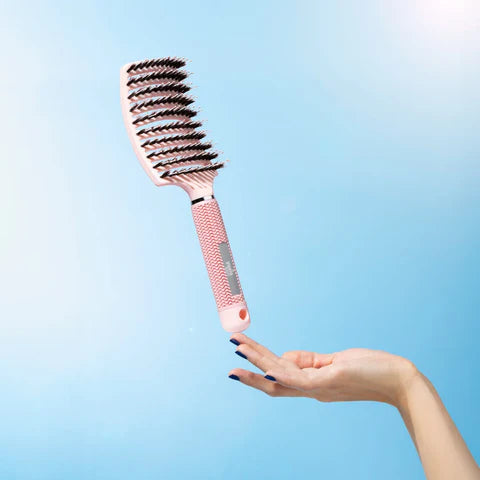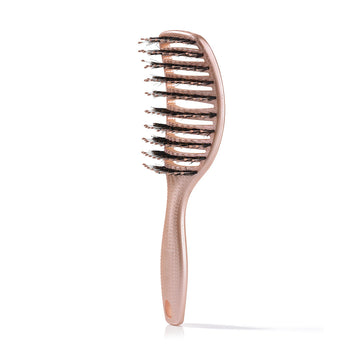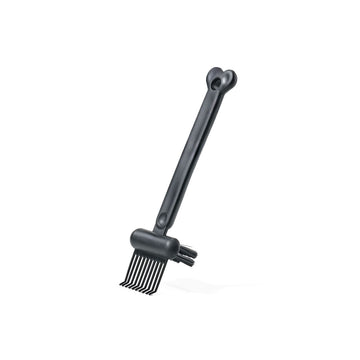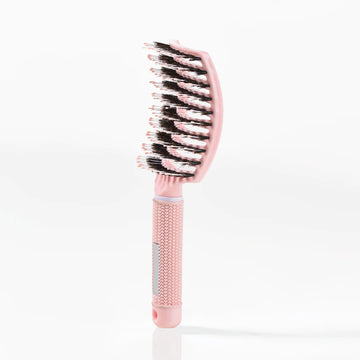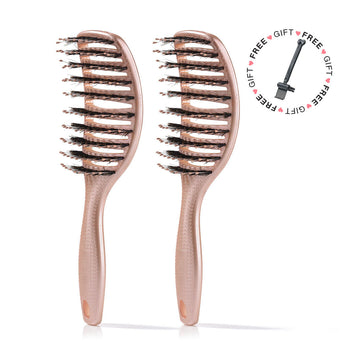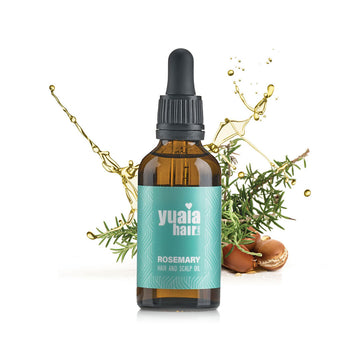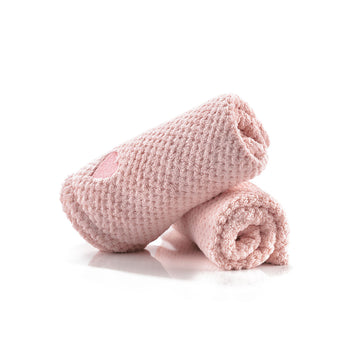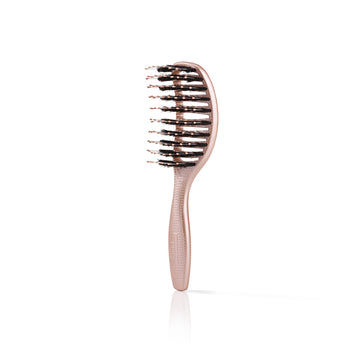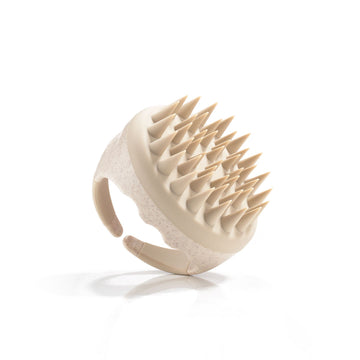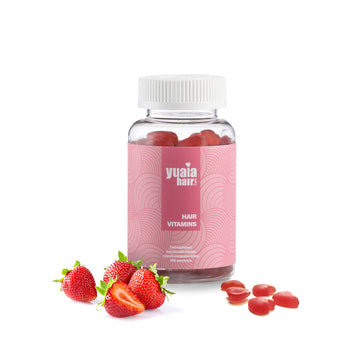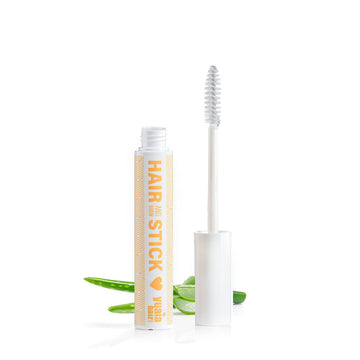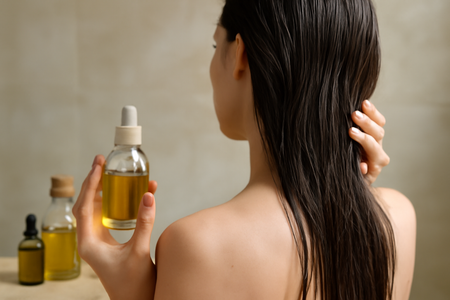
Why Choose Oil Blends for Hair Growth?
Blending oils can create a synergistic effect, where the combined properties of different oils work together to enhance hair growth more effectively than a single oil could. Essential oils like rosemary, peppermint, and lavender are often recommended for their stimulating and soothing properties. When combined with carrier oils such as coconut, jojoba, or almond oil, these blends can provide a nourishing treatment that supports hair health from root to tip.
Exploring the Best Oils to Mix
The focus of this blog is to delve into the best oils to mix for hair growth and how to use them effectively. By understanding the unique benefits of each oil and how they complement one another, you can create a personalized blend that caters to your hair's specific needs. Whether you're looking to stimulate the scalp, add moisture, or enhance shine, the right blend of oils can make all the difference.
Stay tuned as we explore the specific oils that are most effective for promoting hair growth, providing you with the knowledge to craft your own perfect blend for luscious locks.
What Are the Best Essential Oils for Hair Growth?
When it comes to promoting hair growth, essential oils have been recognized for their potent properties. Among the most effective are rosemary, peppermint, lavender, and cedarwood oils. Each of these oils brings unique benefits to the table, making them excellent choices for a hair growth blend.
Rosemary oil is particularly known for its ability to stimulate blood flow to the scalp, which can promote hair growth. Some studies even suggest its effects are comparable to minoxidil, a common hair growth treatment. Incorporating our Rosemary Oil into your routine could enhance your hair care regimen by providing these stimulating benefits.
Peppermint oil is another excellent option, known for its invigorating properties. The menthol content in peppermint oil increases follicle depth and number, making it a refreshing addition to your hair care routine. Its cooling sensation can also invigorate the scalp, promoting a healthy environment for hair growth.
Lavender oil offers calming and soothing properties for the scalp, which can help reduce stress, a known factor in hair loss. Moreover, it may promote thicker hair, making it a valuable component in your oil blend.
Cedarwood oil is beneficial for balancing scalp oils and has antifungal properties. This makes it an excellent choice for maintaining a healthy scalp, which is crucial for hair growth. Its ability to balance oil production can help prevent scalp issues that might impede hair growth.
Which Carrier Oils Should You Use?
Carrier oils play a crucial role in diluting essential oils and enhancing their absorption. Some of the best carrier oils for hair growth include coconut, jojoba, almond, olive, and argan oils. These oils not only serve as a base for essential oils but also offer their own benefits.
Coconut oil is well-loved for its ability to penetrate the hair shaft and reduce protein loss. Its antifungal properties also make it an excellent choice for promoting a healthy scalp, which is essential for hair growth.
Jojoba oil closely mimics the natural oils produced by the scalp, providing moisture without leaving a greasy residue. This makes it ideal for those looking to maintain a healthy scalp environment.
Almond oil is light and nutrient-rich, offering a non-greasy base that nourishes the hair. Its composition makes it an excellent choice for those with fine hair looking for a gentle, effective carrier oil.
Olive oil and argan oil are both known for their nourishing properties. They add shine and softness to the hair, making them perfect for those looking to enhance the overall appearance of their locks while supporting growth.
Notable Oils for Enhanced Hair Growth
Beyond essential and carrier oils, certain oils are notable for their unique properties that support hair growth. Castor oil is rich in ricinoleic acid, offering anti-inflammatory and antimicrobial benefits that can boost hair thickness. Its thick consistency makes it a great option for those looking to add volume to their hair.
Pumpkin seed oil is another powerful oil, known for its ability to block DHT, a hormone linked to hair loss. This oil supports hair thickness and has been supported by clinical evidence, making it a valuable addition to any hair growth blend.
DIY Mixing Proportions for Hair Growth Blends
Creating your own oil blend can be a rewarding and personalized approach to hair care. A simple recipe might include 3-4 drops of rosemary oil, 2 drops of lavender oil, and 2 drops of peppermint oil mixed into 10 ml of a carrier oil like jojoba or coconut. Adjusting proportions based on your hair type and personal preference can help you find the perfect blend for your needs.
Tips for Using Oil Blends in Your Routine
Incorporating oil blends into your hair care routine can be both simple and effective. Start by applying the blend directly to your scalp, using a gentle massage technique to enhance absorption. This not only stimulates blood flow but also helps distribute the oils evenly.
After applying the oils, it's beneficial to wrap your hair in a microfiber towel. This helps reduce hair breakage and allows the oils to penetrate deeper. Leave the oils in for at least 30 minutes, or even overnight for a more intensive treatment, before rinsing thoroughly with a gentle shampoo.
Embracing the Natural Path to Hair Growth
Embracing natural oil blends as part of your hair care routine offers long-term benefits for achieving luscious locks. Consistent use is key, as patience and regular application can lead to noticeable improvements in hair health. By choosing natural ingredients, you're not only supporting hair growth but also reducing exposure to harsh chemicals found in some commercial products.
Frequently Asked Questions
How often should I apply oil blends for hair growth?
The frequency of applying oil blends depends on your hair type and condition. Generally, using the blend once or twice a week is effective for most hair types. However, those with dry or damaged hair may benefit from more frequent applications.
Can I use these oils if I have a sensitive scalp?
If you have a sensitive scalp, it's important to perform a patch test before using any new oil blend. Choose oils known for their gentle properties, such as lavender or jojoba oil, and dilute them properly with a carrier oil to minimize irritation.
Are there any oils I should avoid mixing together?
While most oils can be mixed, it's best to avoid combining oils with strong, conflicting scents or those that may cause irritation when used together. For example, some people find that mixing multiple strong essential oils can be overwhelming or irritating to the scalp.
How long does it take to see results from using oil blends?
Results from using oil blends can vary based on individual hair conditions and consistency of use. Generally, you may start noticing improvements in hair texture and growth within a few weeks to a few months of regular application.
 2-4 day UK delivery
2-4 day UK delivery
 25.000+ satisfied customers
25.000+ satisfied customers
 Satisfaction Guarantee
Satisfaction Guarantee





